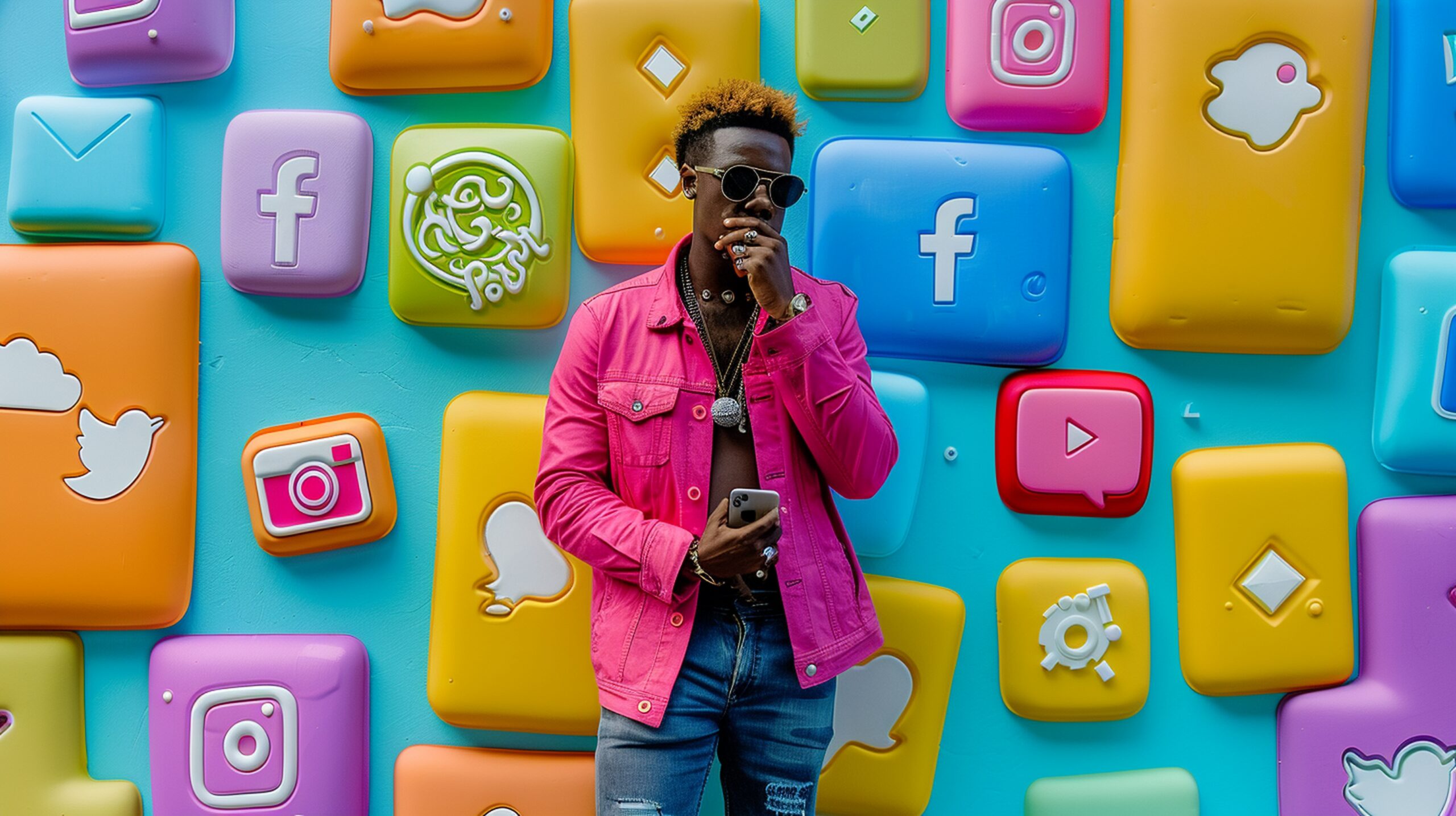In today’s digital age, social media marketing has become an essential tool for businesses looking to expand their reach and connect with their target audience.
With billions of active users across various platforms, social media provides an unparalleled opportunity to showcase your brand, engage with customers, and drive growth.
However, with so much competition vying for attention, it’s crucial to employ effective strategies to maximize your business’s potential on social media.
In this article, we’ll explore 15 powerful social media marketing tips that will help you take your business to new heights.
By implementing these proven techniques, you can enhance your online presence, attract more followers, and ultimately boost your bottom line.
So, let’s dive in and discover how you can leverage the power of social media to propel your business forward in today’s competitive landscape.
We strongly recommend that you check out our guide on how to take advantage of AI in today’s passive income economy.
Table of Contents
1. Define Your Target Audience
Before embarking on any social media marketing campaign, it’s essential to have a clear understanding of your target audience.
Who are they?
What are their interests, pain points, and preferences?
By creating detailed buyer personas, you can tailor your content and messaging to resonate with your ideal customers.
This targeted approach will not only attract the right followers but also foster deeper connections and loyalty.
Take the time to research your audience’s demographics, behavior patterns, and the platforms they frequent most.
Armed with this valuable information, you can craft a social media marketing strategy that speaks directly to their needs and desires.
2. Choose the Right Platforms
With numerous social media platforms available, it’s tempting to establish a presence on every single one.
However, spreading yourself too thin can dilute your efforts and lead to subpar results.
Instead, focus on the platforms where your target audience is most active and engaged.
For example, if you’re targeting professionals, LinkedIn may be your best bet, while Instagram is ideal for visually-oriented businesses like fashion or food.
By prioritizing the right platforms, you can allocate your resources effectively and maximize your social media marketing ROI.
Conduct thorough research to identify the platforms that align with your business goals and target audience preferences.
3. Develop a Consistent Brand Voice
Consistency is key when it comes to social media marketing.
Your brand voice should be recognizable and cohesive across all platforms, creating a seamless experience for your followers.
Develop a unique tone and personality that reflects your brand values and resonates with your target audience.
Whether you opt for a friendly, informative, or humorous approach, ensure that it remains consistent throughout your posts, comments, and interactions.
A consistent brand voice builds trust, familiarity, and loyalty among your followers.
It also helps differentiate your business from competitors and establishes a strong brand identity in the minds of your audience.
4. Create Engaging and Valuable Content
Content is the cornerstone of any successful social media marketing strategy.
To capture and retain your audience’s attention, you need to consistently deliver engaging, informative, and valuable content.
Focus on creating a mix of content formats, including images, videos, infographics, and blog posts, to keep your feed fresh and appealing.
Aim to educate, entertain, or inspire your followers with every piece of content you share.
Address their pain points, answer their questions, and provide actionable insights that they can apply to their lives or businesses.
By consistently delivering high-quality content, you’ll establish yourself as a trusted authority in your industry and keep your followers coming back for more.
5. Leverage Visuals
In the fast-paced world of social media, visuals are essential for grabbing attention and making a lasting impression.
Eye-catching images, graphics, and videos are more likely to stop scrollers in their tracks and encourage engagement.
Invest in high-quality visuals that align with your brand aesthetics and messaging.
Use a consistent color scheme, font, and style to create a cohesive visual identity across your social media profiles.
Incorporate relevant visuals into your posts, such as product photos, behind-the-scenes shots, or user-generated content.
Additionally, explore the power of video content, as it tends to generate higher engagement rates compared to static images.
6. Optimize Your Posting Schedule
Timing is everything when it comes to social media marketing.
To maximize your reach and engagement, it’s crucial to post when your target audience is most active on each platform.
Conduct research to determine the optimal posting times for your specific industry and audience demographics.
Experiment with different posting schedules and analyze your analytics to identify the times that yield the highest engagement rates.
Consistency is also key – develop a posting schedule that you can maintain long-term without compromising on quality.
Use social media management tools to schedule your posts in advance, ensuring a steady flow of content even when you’re busy with other aspects of your business.
7. Engage with Your Audience
Social media is not a one-way communication channel; it’s an opportunity to build relationships and foster meaningful interactions with your audience.
Make a conscious effort to engage with your followers by responding to comments, messages, and mentions in a timely and authentic manner.
Show genuine interest in their opinions, feedback, and concerns.
Encourage conversations by asking questions, running polls, or hosting Q&A sessions.
By actively engaging with your audience, you demonstrate that you value their input and care about their experience with your brand.
This level of engagement not only strengthens customer loyalty but also helps humanize your brand and creates a sense of community around your business.
8. Collaborate with Influencers
Influencer marketing has become a powerful tool in the world of social media marketing.
By partnering with influencers who align with your brand values and have a strong following in your target market, you can expand your reach and tap into new audiences.
Identify influencers who resonate with your brand and have an engaged, relevant following.
Collaborate with them on sponsored posts, product reviews, or creative campaigns that showcase your offerings in an authentic and compelling way.
Influencer partnerships not only increase your brand visibility but also lend credibility to your products or services through the influencer’s endorsement.
9. Run Contests and Giveaways
Contests and giveaways are excellent ways to generate buzz, increase engagement, and grow your following on social media.
People love the opportunity to win prizes, and the promise of a reward can motivate them to interact with your brand.
Design contests that align with your brand identity and encourage user-generated content, such as photo contests or caption competitions.
Giveaways can be used to incentivize followers to tag friends, share your posts, or subscribe to your newsletter.
Ensure that your contests and giveaways follow the platform’s guidelines and clearly communicate the rules, eligibility criteria, and prize details to avoid any confusion or backlash.
10. Utilize Paid Advertising
While organic reach on social media has become increasingly challenging, paid advertising offers a targeted way to reach your desired audience.
Platforms like Facebook, Instagram, and LinkedIn provide robust advertising tools that allow you to target users based on demographics, interests, behaviors, and more.
Leverage these tools to create compelling ad campaigns that drive brand awareness, website traffic, or conversions.
Experiment with different ad formats, such as carousel ads, video ads, or sponsored content, to determine what resonates best with your target audience.
Set clear goals for your advertising campaigns and monitor your metrics closely to optimize your ad spend and achieve the desired results.
11. Analyze and Refine Your Strategy
To continually improve your social media marketing efforts, it’s essential to regularly analyze your performance and refine your strategy accordingly.
Most social media platforms provide built-in analytics tools that offer valuable insights into your audience demographics, engagement rates, and top-performing content.
Use these insights to identify what’s working well and what needs improvement.
Track key metrics such as reach, impressions, clicks, and conversions to gauge the effectiveness of your campaigns.
Conduct A/B testing to compare different content formats, posting times, or ad creatives to determine what yields the best results.
Based on your analysis, make data-driven decisions to optimize your social media marketing strategy and allocate your resources more effectively.
12. Embrace User-Generated Content
User-generated content (UGC) is a powerful tool for building trust, credibility, and engagement on social media.
When your customers or followers share their experiences, photos, or videos featuring your products or services, it serves as authentic social proof for your brand.
Encourage UGC by creating branded hashtags, running photo contests, or simply asking your followers to tag you in their posts.
Repost and showcase the best UGC on your own social media profiles, giving credit to the original creator.
This not only strengthens your relationship with your customers but also provides fresh, authentic content for your feed.
UGC has the added benefit of making your followers feel valued and appreciated, fostering a sense of community around your brand.
13. Leverage Social Media Stories
Social media stories, such as Instagram Stories and Facebook Stories, have gained immense popularity in recent years.
These ephemeral, vertical-format posts offer a more casual and authentic way to connect with your audience in real-time.
Use stories to share behind-the-scenes glimpses, product sneak peeks, or time-sensitive promotions.
Incorporate interactive elements like polls, quizzes, or question stickers to encourage engagement and gather valuable feedback from your followers.
Stories also provide an opportunity to showcase your brand’s personality and humanize your business, creating a stronger emotional connection with your audience.
14. Monitor and Respond to Brand Mentions
Social media is a powerful tool for monitoring your brand’s reputation and staying attuned to customer sentiment.
Set up alerts or use social media monitoring tools to track mentions of your brand, products, or relevant keywords across various platforms.
This allows you to quickly identify and respond to any positive or negative feedback, customer inquiries, or potential issues.
By proactively addressing concerns and showing gratitude for positive mentions, you demonstrate your commitment to customer satisfaction and build trust in your brand.
Monitoring brand mentions also provides valuable insights into how your audience perceives your business and can help you identify areas for improvement or opportunities for growth.
15. Continuously Adapt and Innovate
The world of social media is constantly evolving, with new platforms, features, and trends emerging at a rapid pace.
To stay ahead of the curve and maintain a competitive edge, it’s crucial to continuously adapt and innovate your social media marketing strategy.
Stay up-to-date with the latest industry developments, algorithm updates, and best practices.
Experiment with new content formats, such as live streaming, interactive polls, or augmented reality filters, to keep your audience engaged and excited.
Don’t be afraid to try out emerging platforms or features that align with your brand and target audience.
By embracing change and being willing to take calculated risks, you can position your business as a forward-thinking, innovative brand in the eyes of your followers.
Conclusion
Social media marketing offers a wealth of opportunities for businesses to expand their reach, engage with their audience, and drive growth.
By implementing these 15 powerful tips, you can elevate your social media presence and maximize your business’s potential.
Remember to define your target audience, choose the right platforms, develop a consistent brand voice, and create engaging, valuable content.
Leverage visuals, optimize your posting schedule, and actively engage with your followers to build strong relationships.
Collaborate with influencers, run contests, and utilize paid advertising to amplify your reach and drive conversions.
Regularly analyze your performance, embrace user-generated content, and leverage social media stories to connect with your audience on a deeper level.
Monitor brand mentions, continuously adapt to new trends, and don’t be afraid to innovate.
By staying committed to these strategies and consistently delivering value to your audience, you can harness the power of social media marketing to take your business to new heights.
So, start implementing these tips today and watch your social media presence flourish!
FAQ
What is social media marketing?
Social media marketing is the practice of using social media platforms to promote a business, product, or service.
It involves creating and sharing content, engaging with followers, and running targeted advertising campaigns to reach a desired audience and achieve specific marketing goals.
Social media marketing allows businesses to build brand awareness, generate leads, drive website traffic, and ultimately increase conversions and sales.
By leveraging the power of social media, businesses can connect with their target audience, foster relationships, and establish a strong online presence in today’s digital landscape.
What do you do as a social media marketer?
As a social media marketer, your primary responsibility is to develop and execute a comprehensive social media marketing strategy that aligns with your business’s goals and target audience.
This involves a wide range of tasks, including:
- Creating and curating engaging content, such as posts, images, videos, and blog articles, to share on various social media platforms.
- Developing a content calendar to ensure a consistent and strategic posting schedule.
- Monitoring and analyzing social media metrics to track performance, identify trends, and make data-driven decisions.
- Engaging with followers by responding to comments, messages, and mentions in a timely and authentic manner.
- Running targeted advertising campaigns to reach specific audiences and drive conversions.
- Collaborating with influencers and other brands to expand reach and tap into new audiences.
- Staying up-to-date with the latest social media trends, platform updates, and best practices to continuously optimize your strategy.
- Reporting on the effectiveness of your social media marketing efforts and making recommendations for improvement.
As a social media marketer, your goal is to build and maintain a strong online presence for your business, foster meaningful relationships with your audience, and ultimately drive business growth through social media.
What are the 5 ways of social media marketing?
There are various approaches to social media marketing, but here are five key ways businesses can leverage social media to achieve their marketing goals:
- Content Marketing: Creating and sharing valuable, relevant, and consistent content to attract and retain a clearly defined audience. This can include blog posts, images, videos, infographics, and other forms of content that educate, entertain, or inspire your target audience.
- Influencer Marketing: Collaborating with influencers who have a strong following in your target market to promote your brand, products, or services. Influencers can create sponsored content, review your offerings, or participate in creative campaigns to expose your brand to new audiences and lend credibility to your business.
- Paid Advertising: Utilizing the advertising tools provided by social media platforms to reach a targeted audience based on demographics, interests, behaviors, and more. Paid advertising allows businesses to amplify their reach, drive website traffic, and generate leads or conversions.
- Community Management: Building and nurturing a community of engaged followers by consistently interacting with your audience, responding to their inquiries or feedback, and fostering meaningful relationships. This can involve hosting Q&A sessions, running contests or giveaways, or simply showing appreciation for your followers’ support.
- Social Listening and Monitoring: Tracking and analyzing conversations, mentions, and sentiment around your brand, industry, or relevant keywords on social media. This allows businesses to gain valuable insights into customer needs, preferences, and pain points, as well as identify opportunities for improvement or innovation.
By incorporating these five ways of social media marketing into your overall strategy, you can effectively reach and engage your target audience, build brand loyalty, and drive business growth.
What social media is best for marketing?
The best social media platform for marketing depends on your specific business goals, target audience, and industry. Each platform has its own unique features, demographics, and strengths that may align better with certain marketing objectives. Here’s an overview of some of the most popular social media platforms and their suitability for different marketing purposes:
- Facebook: With its vast user base and diverse demographics, Facebook is a versatile platform suitable for most businesses. It offers robust advertising tools, allows for detailed targeting, and supports various content formats, making it ideal for brand awareness, lead generation, and community building.
- Instagram: Highly visual and popular among younger audiences, Instagram is perfect for businesses with visually appealing products or services, such as fashion, beauty, food, or travel. It’s effective for showcasing your brand’s personality, storytelling, and engaging with followers through creative content and hashtags.
- Twitter: Known for its real-time nature and public conversations, Twitter is ideal for businesses that want to stay on top of industry trends, engage in customer service, or participate in relevant discussions. It’s also useful for sharing quick updates, news, or thought leadership content.
- LinkedIn: As a professional networking platform, LinkedIn is best suited for B2B marketing, recruiting, and establishing thought leadership. It’s effective for sharing industry insights, connecting with potential clients or partners, and running targeted advertising campaigns to reach decision-makers.
- Pinterest: With its emphasis on visual discovery and inspiration, Pinterest is ideal for businesses in creative, lifestyle, or e-commerce industries. It allows users to save and share images or videos to themed boards, making it perfect for driving traffic to your website or online store.
- YouTube: As the largest video-sharing platform, YouTube is suitable for businesses that want to create engaging video content, such as tutorials, product demonstrations, or brand storytelling. It offers the opportunity to reach a massive audience and drive traffic to your website or other social media profiles.
Ultimately, the best social media platform for your business will depend on where your target audience is most active and engaged, as well as the type of content that resonates with them. It’s often beneficial to have a presence on multiple platforms to maximize your reach and impact, while tailoring your strategy to each platform’s unique strengths and audience preferences.

We strongly recommend that you check out our guide on how to take advantage of AI in today’s passive income economy.




